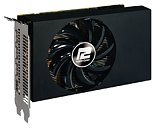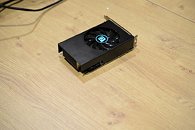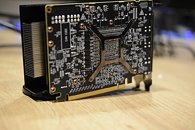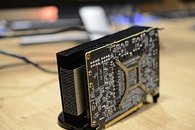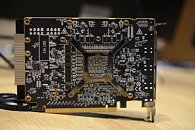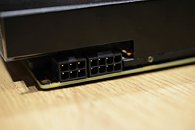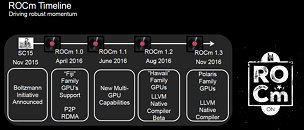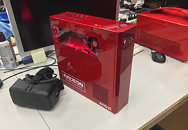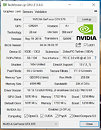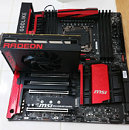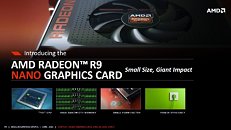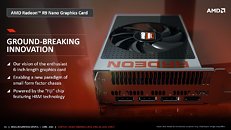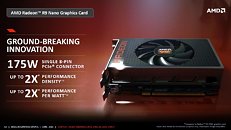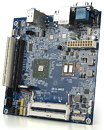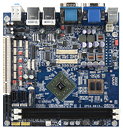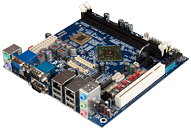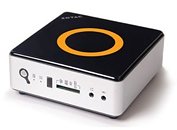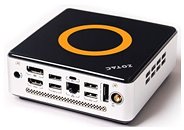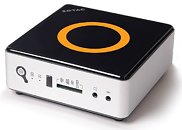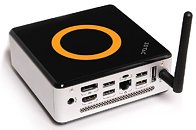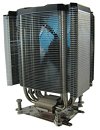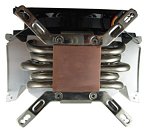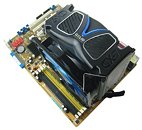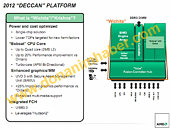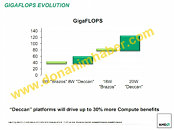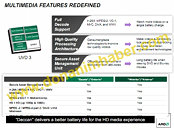Apr 24th, 2025 11:34 EDT
change timezone
Latest GPU Drivers
New Forum Posts
- Are the 8 GB cards worth it? (154)
- The TPU UK Clubhouse (26169)
- New GPU 5070 Ti or better CPU Ryzen7 7800X3D ? (16)
- To distill or not distill what say ye? (92)
- I dont understand the phone OS world..... (21)
- TPU's Nostalgic Hardware Club (20275)
- Help me identify Chip of this DDR4 RAM (34)
- AAF Optimus Modded Driver For Windows 10 & Windows 11 - Only for Realtek HDAUDIO Chips (442)
- What are you playing? (23456)
- 5060 Ti 8GB DOA (263)
Popular Reviews
- NVIDIA GeForce RTX 5060 Ti 8 GB Review - So Many Compromises
- Colorful iGame B860M Ultra V20 Review
- ASUS GeForce RTX 5060 Ti TUF OC 16 GB Review
- ASRock X870E Taichi Lite Review
- Upcoming Hardware Launches 2025 (Updated Apr 2025)
- Sapphire Radeon RX 9070 XT Pulse Review
- Sapphire Radeon RX 9070 XT Nitro+ Review - Beating NVIDIA
- NVIDIA GeForce RTX 5060 Ti PCI-Express x8 Scaling
- AMD Ryzen 7 9800X3D Review - The Best Gaming Processor
- ASUS GeForce RTX 5080 TUF OC Review
Controversial News Posts
- NVIDIA GeForce RTX 5060 Ti 16 GB SKU Likely Launching at $499, According to Supply Chain Leak (182)
- NVIDIA Sends MSRP Numbers to Partners: GeForce RTX 5060 Ti 8 GB at $379, RTX 5060 Ti 16 GB at $429 (127)
- NVIDIA Launches GeForce RTX 5060 Series, Beginning with RTX 5060 Ti This Week (115)
- Nintendo Confirms That Switch 2 Joy-Cons Will Not Utilize Hall Effect Stick Technology (105)
- Nintendo Switch 2 Launches June 5 at $449.99 with New Hardware and Games (99)
- Sony Increases the PS5 Pricing in EMEA and ANZ by Around 25 Percent (85)
- NVIDIA PhysX and Flow Made Fully Open-Source (77)
- Windows Notepad Gets Microsoft Copilot Integration (75)
News Posts matching #Nano
Return to Keyword Browsing
AMD Unveils Radeon RX Vega 56 Nano Graphics Card
AMD today unveiled the Radeon RX Vega 56 Nano, the spiritual successor to the disruptive high-end SFF graphics card, the Radeon R9 Nano. Unlike the R9 Nano, the RX Vega 56 Nano is an AIB (add-in board) partner effort, specifically by PowerColor. The card itself is a good inch longer than the R9 Nano. Also, unlike its predecessor, it doesn't feature all stream processors physically present on the silicon. The card is cooled by a dense aluminium fin-stack heatsink, ventilated by a single fan. The card is expected to be priced at USD $449.
Update: We went hands-on with this card.
Update: We went hands-on with this card.

PowerColor to Showcase Radeon RX Vega 56 Nano Edition at Computex
Last month, the attendees at the AMD Ryzen 2000 series launch event in Munich spotted a miniature AMD graphics card. At the time, we thought it was PowerColor's rendition of the highly anticipated Radeon RX Vega Nano. However, the latest press release from the graphics card manufacturer stated otherwise. Apparently, the prototype that was on display in Munich was actually the RX Vega 56 Nano Edition. Unfortunately, PowerColor didn't reveal any technical information about the graphics card that we didn't know already. And so, we're back to the waiting game for a proper RX Vega Nano release.

PowerColor Radeon RX Vega Nano Pictured
A mysterious Radeon RX Vega Nano graphics card from manufacturer PowerColor made a surprise appearance at AMD's Ryzen 2000 series launch event held in Munich. Although based on AMD's reference design, this PowerColor model differs a little from the RX Vega Nano prototype that was showcased back in SIGGRAPH 2017 by Raja Koduri. In terms of design, PowerColor's prototype lacks the illuminated Radeon cube on the corner, and the axial fan sits further to the left. The heatsink is physically longer and extends slightly beyond the graphics card's PCB. The manufacturer also added an additional 6-pin PCIe connector for more power delivery. At the time of this article's publication, PowerColor hasn't confirmed if their Radeon RX Vega Nano will be available to the public.

LG Unveils 34WK95 Monitor: 34", 5K, UltraWide, HDR600, Thunderbolt 3, Nano IPS
LG today at CES announced a new introduction to its monitor lineup. The 34WK95 continues the company's foray into the 5K market, this time with a UltraWide part, which delivers a 21:9 aspect ratio that should improve productivity in some more horizontal-dependent workloads. The 34WK95 is a 34" affair with HDR600 support, and Thunderbolt 3 capabilities for daisy-chain of multiple monitors or connection of other Thunderbolt 3 devices. The 5K resolution (5120x2160) and Nano IPS display technology mean LG is confident in the color reproduction and viewing angles of this monitor for professionals. The monitor features a four-edgeless design (with ultra slim bezels on all sides), and the typical LG half-moon stand has been redesigned with metal instead of plastic, and should offer increased stability.

AMD Announces the Radeon RX Vega Nano
AMD had two press days over the weekend to cover a whole bunch of announcements- Ryzen Threadripper, RX Vega, Vega Pro and more. They provided details galore on the Vega microarchitecture, and the two RX Vega versions. Well, make that three now. AMD at Capcaicin SIGGRAPH 2017 also announced and showed off the RX Vega Nano.
Raja Koduri, Senior Vice-president of AMD's Radeon Technology Group, came up on stage minutes ago and handed over one of the very few working samples of this new card to Tim Sweeney, founder of Epic Games and Unreal Engine. The RX Vega Nano is an update to the R9 Nano from 2015 which was based off AMD's "Fiji" microarchitecture and was the then king of efficiency and small form factor support. We were only just talking about how RX Vega missed an opportunity with HBM2 to provide another mITX GPU and looks like AMD agreed.
Raja Koduri, Senior Vice-president of AMD's Radeon Technology Group, came up on stage minutes ago and handed over one of the very few working samples of this new card to Tim Sweeney, founder of Epic Games and Unreal Engine. The RX Vega Nano is an update to the R9 Nano from 2015 which was based off AMD's "Fiji" microarchitecture and was the then king of efficiency and small form factor support. We were only just talking about how RX Vega missed an opportunity with HBM2 to provide another mITX GPU and looks like AMD agreed.

AMD Announces ROCm Initiative - High-Performance Computing & Open-Standards
AMD on Monday announced their ROCm initiative. Introduced by AMD's Gregory Stoner, Senior Director for the Radeon Open Compute Initiative, ROCm stands for Radeon Open Compute platforM. This open-standard, high-performance, Hyper Scale computing platform stands on the shoulders of AMD's technological expertise and accomplishments, with cards like the Radeon R9 Nano achieving as much as 46 GFLOPS of peak single-precision performance per Watt.
The natural evolution of AMD's Boltzmann Initiative, ROCm grants developers and coders a platform which allows the leveraging of AMD's GPU solutions through a variety of popular programming languages, such as OpenCL, CUDA, ISO C++ and Python. AMD knows that the hardware is but a single piece in an ecosystem, and that having it without any supporting software is a recipe for failure. As such, AMD's ROCm stands as AMD's push towards HPC by leveraging both its hardware, as well as the support for open-standards and the conversion of otherwise proprietary code.
The natural evolution of AMD's Boltzmann Initiative, ROCm grants developers and coders a platform which allows the leveraging of AMD's GPU solutions through a variety of popular programming languages, such as OpenCL, CUDA, ISO C++ and Python. AMD knows that the hardware is but a single piece in an ecosystem, and that having it without any supporting software is a recipe for failure. As such, AMD's ROCm stands as AMD's push towards HPC by leveraging both its hardware, as well as the support for open-standards and the conversion of otherwise proprietary code.

AMD Radeon Fury X2 Reference Air Cooled?
AMD, which has been timing its upcoming dual-GPU "Fiji" graphics card to launch sometime this year, may have demoed a production version of the card in one of its launch partners, Falcon Northwest's, Tiki high-end gaming desktop, as a "VR developer box." AMD's Roy Taylor, in a recent tweet, captions a picture of this dev box as being "the world's best DirectX 12 VR developer box," leading the press to speculate that it's running the company's dual-GPU "Fiji" card.
A close look at AMD's VR dev box, through its windowed graphics card compartment, reveals an air-cooled AMD reference graphics card, which VideoCardz' trigonometry pins as being shorter than a Radeon R9 390X reference board. It could be a reference R9 380X, but then a reference dual-GPU "Fiji" PCB is roughly of the same length, and a R9 380X wouldn't earn the title of being the "world's best" from a senior AMD exec while there are faster AMD cards, such as the R9 Fury. The ability of the full-spec "Fiji" silicon to cope well with a rather simple air-cooler in the R9 Nano fans even more speculation that a dual-GPU "Fiji" board could make do with a powerful air-channel cooler.
A close look at AMD's VR dev box, through its windowed graphics card compartment, reveals an air-cooled AMD reference graphics card, which VideoCardz' trigonometry pins as being shorter than a Radeon R9 390X reference board. It could be a reference R9 380X, but then a reference dual-GPU "Fiji" PCB is roughly of the same length, and a R9 380X wouldn't earn the title of being the "world's best" from a senior AMD exec while there are faster AMD cards, such as the R9 Fury. The ability of the full-spec "Fiji" silicon to cope well with a rather simple air-cooler in the R9 Nano fans even more speculation that a dual-GPU "Fiji" board could make do with a powerful air-channel cooler.

TechPowerUp News: Skylake Stress Bug, R9 Nano Price Cut, and a 5.1 GHz Xeon
This week on TechPowerUp News: Intel 6th gen. Core "Skylake" processors freeze over under certain kinds of stress; AMD's big price-cut for the super-small Radeon R9 Nano, and the fabled 5.10 GHz Intel Xeon processor.

TechPowerUp Releases GPU-Z 0.8.6
TechPowerUp released version 0.8.6 of GPU-Z, the popular graphics subsystem information and diagnostics utility, which gives you detailed info on your installed graphics chips, and lets you monitor the various sensors of your GPUs. To begin with, the new version comes with DirectX 12 support, with the ability to tell which feature-level of Direct3D your hardware supports. Command-line usage has been added with the "/help" argument. Support was added for several GPUs, notably GTX 950, Microsoft Surface Book GPU, R9 Nano, and AMD "Carrizo" iGPU.
The app can now wake up AMD GPUs in laptops that are power-gated to conserve power (and which would hence not get properly detected). BIOS reading is improved, and incorrect fan-speed reading, and a rare BSOD in AMD R9 Fury series GPUs, are fixed. Several stability improvements for Intel iGPUs were made, with the addition of support for Intel "Braswell," "Cherry Lake," and "Skylake" iGPUs. AMD GPU clock speed detection with no AMD driver installed, has been improved. A rare case of misreading BIOS in multi-GPU setups, has been fixed. Voltage monitoring on some Sapphire graphics cards has been fixed.DOWNLOAD: TechPowerUp GPU-Z 0.8.6 | GPU-Z 0.8.6 ASUS ROG Themed
The change-log follows.
The app can now wake up AMD GPUs in laptops that are power-gated to conserve power (and which would hence not get properly detected). BIOS reading is improved, and incorrect fan-speed reading, and a rare BSOD in AMD R9 Fury series GPUs, are fixed. Several stability improvements for Intel iGPUs were made, with the addition of support for Intel "Braswell," "Cherry Lake," and "Skylake" iGPUs. AMD GPU clock speed detection with no AMD driver installed, has been improved. A rare case of misreading BIOS in multi-GPU setups, has been fixed. Voltage monitoring on some Sapphire graphics cards has been fixed.DOWNLOAD: TechPowerUp GPU-Z 0.8.6 | GPU-Z 0.8.6 ASUS ROG Themed
The change-log follows.

AMD Radeon R9 Nano Coming Sooner Than You Think?
AMD's upcoming disruptive performance-segment graphics card, the Radeon R9 Nano, could be arriving sooner than its late-Summer expected launch. One of AMD's promotional heads Anthony "Elmy" Lackey posted two pictures of the card on his Flickr page, which reiterates just how compact the thing is. AMD earlier announced that the R9 Nano will be faster than the Radeon R9 290X, with typical board power well under 190W, making it an exciting product to look forward to. The R9 Nano will be based on the same "Fiji" silicon, which powers the R9 Fury X and R9 Fury. AMD could make a major announcement related to this product very soon, given how Elmy promised to release a few details next week.

AMD Radeon R9 Nano to Feature a Single PCIe Power Connector
AMD's Radeon R9 Nano is shaping up to be a more important card for AMD, than even its flaghsip, the R9 Fury X. Some of the first pictures of the Fury X led us to believe that it could stay compact only because it's liquid cooled. AMD disproved that notion, unveiling the Radeon R9 Nano, an extremely compact air-cooled graphics cards, with some stunning chops.
The Radeon R9 Nano is a feat similar to the NUC by Intel - to engineer a product that's surprisingly powerful for its size. The card is 6-inches long, 2-slot thick, and doesn't lug along any external radiator. AMD CEO Lisa Su, speaking at the company's E3 conference, stated that the R9 Nano will be faster than the Radeon R9 290X. That shouldn't surprise us, since it's a bigger chip; but it's the electrical specs, that make this product exciting - a single 8-pin PCIe power input, with a typical board power rated at 175W (Radeon R9 290X was rated at 275W). The card itself is as compact as some of the "ITX-friendly" custom design boards launched in recent times. It uses a vapor-chamber based air-cooling solution, with a single fan. The Radeon R9 Nano will launch later this Summer. It could compete with the GeForce GTX 970 in both performance and price.
The Radeon R9 Nano is a feat similar to the NUC by Intel - to engineer a product that's surprisingly powerful for its size. The card is 6-inches long, 2-slot thick, and doesn't lug along any external radiator. AMD CEO Lisa Su, speaking at the company's E3 conference, stated that the R9 Nano will be faster than the Radeon R9 290X. That shouldn't surprise us, since it's a bigger chip; but it's the electrical specs, that make this product exciting - a single 8-pin PCIe power input, with a typical board power rated at 175W (Radeon R9 290X was rated at 275W). The card itself is as compact as some of the "ITX-friendly" custom design boards launched in recent times. It uses a vapor-chamber based air-cooling solution, with a single fan. The Radeon R9 Nano will launch later this Summer. It could compete with the GeForce GTX 970 in both performance and price.
TRENDnet Announces Availability of Nano Wireless Extender
TRENDnet, a best-in-class wired and wireless networking hardware brand, today from MedPi 2013, announces the availability of the N150 Nano Easy-N-Range Extender, model TEW-713RE, which extends an existing wireless network at the touch of a button.
Simply go to the area of the home with poor wireless connectivity. To maximize extension range, plug the TEW-713RE into an outlet in a location where there is still two bars of network connectivity to the home wireless router. The extender is so compact it's practically unnoticed when plugged into an outlet. Press the WPS button on the wireless router and then on the TEW-713RE and you're done. The TEW-713RE automatically adopts the router's wireless network name, encryption, and password. It's now securely extending the wireless network to an area which experienced poor or no wireless coverage.
Simply go to the area of the home with poor wireless connectivity. To maximize extension range, plug the TEW-713RE into an outlet in a location where there is still two bars of network connectivity to the home wireless router. The extender is so compact it's practically unnoticed when plugged into an outlet. Press the WPS button on the wireless router and then on the TEW-713RE and you're done. The TEW-713RE automatically adopts the router's wireless network name, encryption, and password. It's now securely extending the wireless network to an area which experienced poor or no wireless coverage.
Spire Announces NanoTech Bearing Fan Series
Spire is proud to introduce our new fan series with Nano-ceramic precision bearing. Spire fans with Nanobearing offer a more silent, reliable and durable solution for the most demanding situations.
Traditional fans with oil seal bearings have serious wear with a relatively short service life as the bearings can easily overheat which results the impeller jamming and the PCB melting. Fans with nano-ceramic bearings are made from namo-zirconia powder as main material and a collocating special nano-particles lubricant to guarantee an exponentially longer life. The average service life is more than 70,000 hours.
Traditional fans with oil seal bearings have serious wear with a relatively short service life as the bearings can easily overheat which results the impeller jamming and the PCB melting. Fans with nano-ceramic bearings are made from namo-zirconia powder as main material and a collocating special nano-particles lubricant to guarantee an exponentially longer life. The average service life is more than 70,000 hours.

Crytek Takes Aim with Crysis 3 - The First Blockbuster Shooter of 2013
The hunted becomes the hunter! Electronic Arts Inc. and award-winning developer Crytek GmbH, today announced Crysis 3, the premier sandbox shooter experience of 2013. Powered by Crytek's proprietary CryENGINE, Crysis 3 advances the state of the art with unparalleled visuals and dynamic shooter gameplay. Players take on the role of 'Prophet' as he returns to New York, only to discover that the city has been encased in a Nanodome created by the corrupt Cell Corporation. The New York City Liberty Dome is a veritable urban rainforest teeming with overgrown trees, dense swamplands and raging rivers. Within the Liberty Dome, seven distinct and treacherous environments become known as the Seven Wonders. This dangerous new world demands advanced weapons and tactics. Prophet will utilize a lethal composite bow, an enhanced Nanosuit and devastating alien tech to become the deadliest hunter on the planet.
"Crysis 3 is a thrilling mix of sandbox gameplay, advanced combat and hi-tech human and alien weaponry that shooter fans will love," said Cevat Yerli, Chief Executive Officer of Crytek. "Leveraging the latest CryENGINE technology, we're able to deliver seven unique themes that offer stunning and visually loaded gameplay experiences. We cannot wait until people get their hands on the game."
"Crysis 3 is a thrilling mix of sandbox gameplay, advanced combat and hi-tech human and alien weaponry that shooter fans will love," said Cevat Yerli, Chief Executive Officer of Crytek. "Leveraging the latest CryENGINE technology, we're able to deliver seven unique themes that offer stunning and visually loaded gameplay experiences. We cannot wait until people get their hands on the game."
J&W Unveils First Nano-ITX Atom "Cedar Trail" Motherboard
Embedded systems and IPC maker J&W unveiled the first Atom "Cedar Trail" motherboard in the nano-ITX form-factor. The board measures just 120 x 120 mm, and is designed for embedded computing devices. It draws power from a 2-pin 12V DC input. It holds a dual-core Intel Atom D2700 (2.13 GHz) or D2500 (1.83 GHz) processor, one DDR3 SO-DIMM slot (reverse side), which supports up to 4 GB of DDR3-1066/800 MHz memory, and basic connectivity. The lone expansion slot is a mini-PCIe, designed to hold WLAN adapters.
Display outputs include D-Sub (by header), LVDS, and HDMI. Connectivity options include one SATA 3 Gb/s (AHCI), five USB 2.0 ports (three type-A connectors, two via headers), gigabit Ethernet, 6-channel HD audio over HDMI and 2-channel analog audio, RS232 Serial, SD/SDHC card reader, SIM card slot (3G option), consumer IR, and PS/2 (header). The CPU and core logic can be passively cooled. The Cedar Trail Nano-ITX board from J&W will be available to embedded systems and IPC markets, soon.
Display outputs include D-Sub (by header), LVDS, and HDMI. Connectivity options include one SATA 3 Gb/s (AHCI), five USB 2.0 ports (three type-A connectors, two via headers), gigabit Ethernet, 6-channel HD audio over HDMI and 2-channel analog audio, RS232 Serial, SD/SDHC card reader, SIM card slot (3G option), consumer IR, and PS/2 (header). The CPU and core logic can be passively cooled. The Cedar Trail Nano-ITX board from J&W will be available to embedded systems and IPC markets, soon.

VIA Announces Latest Computer-on-Module (COM) Express Module, the VIA COMe-8X90
VIA Technologies, Inc, a leading innovator of power efficient x86 processor platforms, today announced the latest VIA COMe-8X90 module, featuring a 1.2 GHz VIA Nano X2 E-Series dual core processor and the VIA VX900H media system processor (MSP). The ruggedized VIA COMe-8X90 module targets industrial PC and large OEM customers focused on dynamic application segments, including medical, advanced gaming, industrial automation and digital signage.
Measuring 95 mm x 125 mm, COM Express is an industry standard embedded form factor developed and maintained by the PICMG (PCI Industrial Computer Manufacturers Group). COM Express modules integrate core CPU, chipset and memory on the module, providing support for extensive connectivity options, including USB, audio, video, and Ethernet, through board-to-board connectors to an I/O carrier board. The modular approach allows for short time-to market, application-specific customization, simplified development, high stability and long life cycles.
Measuring 95 mm x 125 mm, COM Express is an industry standard embedded form factor developed and maintained by the PICMG (PCI Industrial Computer Manufacturers Group). COM Express modules integrate core CPU, chipset and memory on the module, providing support for extensive connectivity options, including USB, audio, video, and Ethernet, through board-to-board connectors to an I/O carrier board. The modular approach allows for short time-to market, application-specific customization, simplified development, high stability and long life cycles.

VIA Announces World's First Quad Core Mini-ITX Boards
VIA Technologies, Inc, a leading innovator of power efficient x86 processor platforms, today announced the world's first quad core Mini-ITX boards featuring the latest VIA QuadCore E-Series processor. The VIA EPIA-M900 and VIA EPIA-M910 are the first two Mini-ITX boards to feature the 1.2 GHz VIA QuadCore E-Series processor, offering enhanced multi-tasking and superb multimedia performance on the lowest quad core power budget for next generation embedded products.
The VIA QuadCore E-Series processor features a highly optimized, energy efficient multi-core architecture, which is natively 64-bit compatible and comes with a host of additional performance features including Adaptive Overclocking. To meet the low power demands of the embedded market, the VIA QuadCore E-Series processor offers industry-leading energy efficiency, with the VIA QuadCore E-Series 1.2+ GHz processor delivering a thermal design power (TDP) of only 27.5 W. The distributed power of the VIA QuadCore E-Series processor makes it ideal for handling the most demanding HD video formats for immersive multi-display applications and environments.
The VIA QuadCore E-Series processor features a highly optimized, energy efficient multi-core architecture, which is natively 64-bit compatible and comes with a host of additional performance features including Adaptive Overclocking. To meet the low power demands of the embedded market, the VIA QuadCore E-Series processor offers industry-leading energy efficiency, with the VIA QuadCore E-Series 1.2+ GHz processor delivering a thermal design power (TDP) of only 27.5 W. The distributed power of the VIA QuadCore E-Series processor makes it ideal for handling the most demanding HD video formats for immersive multi-display applications and environments.

VIA Announces Highest Performance Dual Core VIA EPIA-M910 Mini-ITX Board
VIA Technologies, Inc, a leading innovator of power efficient x86 processor platforms, today announced the VIA EPIA-M910 Mini-ITX board, the latest dual core Mini-ITX board featuring one of the richest I/O sets available for a wide range of embedded applications including ATM, kiosks, POS, digital signage, healthcare and digital media applications.
The VIA EPIA-M910 is available in both active and passive cooling configurations with the choice of either a performance oriented 1.6 GHz VIA Nano X2 dual core processor or a fanless 1.0 GHz VIA Eden X2 dual core processor and is paired with the VIA VX900 media system processor, which provides the ideal platform for today's HD-intensive applications.
The VIA EPIA-M910 is available in both active and passive cooling configurations with the choice of either a performance oriented 1.6 GHz VIA Nano X2 dual core processor or a fanless 1.0 GHz VIA Eden X2 dual core processor and is paired with the VIA VX900 media system processor, which provides the ideal platform for today's HD-intensive applications.

IBM Research Determines Atomic Limits of Magnetic Memory
Punctuating 30 years of nanotechnology research, scientists from IBM Research (NYSE: IBM) have successfully demonstrated the ability to store information in as few as 12 magnetic atoms. This is significantly less than today's disk drives, which use about one million atoms to store a single bit of information. The ability to manipulate matter by its most basic components - atom by atom - could lead to the vital understanding necessary to build smaller, faster and more energy-efficient devices.
While silicon transistor technology has become cheaper, denser and more efficient, fundamental physical limitations suggest this path of conventional scaling is unsustainable. Alternative approaches are needed to continue the rapid pace of computing innovation.
While silicon transistor technology has become cheaper, denser and more efficient, fundamental physical limitations suggest this path of conventional scaling is unsustainable. Alternative approaches are needed to continue the rapid pace of computing innovation.
'Nanowiggles': Graphene Nanomaterials With Tunable Functionality In Electronics
Troy, N.Y. - Electronics are getting smaller and smaller, flirting with new devices at the atomic scale. However, many scientists predict that the shrinking of our technology is reaching an end. Without an alternative to silicon-based technologies, the miniaturization of our electronics will stop. One promising alternative is graphene - the thinnest material known to man. Pure graphene is not a semiconductor, but it can be altered to display exceptional electrical behavior. Finding the best graphene-based nanomaterials could usher in a new era of nanoelectronics, optics, and spintronics (an emerging technology that uses the spin of electrons to store and process information in exceptionally small electronics).
R&D: Memristors And Bendy Memory
Memristors are a fourth class of electric circuit, first hypothesized way back in the 1970's, which are a new addition to the transistors, capacitors, resistors etc that go into making a silicon chip. HP has put a great deal of resources into developing this technology and is expected to release memory-like memristor products in 2013, so it's not far off from commercial deployment. Now however, the Korean Advanced Institute of Science and Technology (KAIST) have found a way to use memristors to make what they describe as a "fully functional" flexible resistive random access memory (RRAM). This memory is built on a plastic substrate and can be randomly accessed, written to and erased. However, as this substrate is flexible, it can be bent and rolled up easily, opening up possibilities for use that haven't even been thought of yet.

ZOTAC Announces ZBOX Nano VD01
ZOTAC International, a leading innovator and channel manufacturer of graphics cards, motherboards and mini-PCs, today launches the latest addition to the ZBOX nano product lineup with the new ZBOX nano VD01 series - an affordable palm-sized mini-PC powered by a VIA Nano X2 processor.
The ZOTAC ZBOX nano VD01 series combines the latest VIA Nano X2 U4025 CPU and VX900H media system processor for outstanding energy-efficiency and performance. VIA Chrome9 graphics with ChromotionHD 2.0 processing enables the ZOTAC ZBOX nano VD01 series to deliver silky-smooth playback of popular high-definition video formats, including Blu-ray, MPEG2, H.264, VC-1 and streaming Internet video.
The ZOTAC ZBOX nano VD01 series combines the latest VIA Nano X2 U4025 CPU and VX900H media system processor for outstanding energy-efficiency and performance. VIA Chrome9 graphics with ChromotionHD 2.0 processing enables the ZOTAC ZBOX nano VD01 series to deliver silky-smooth playback of popular high-definition video formats, including Blu-ray, MPEG2, H.264, VC-1 and streaming Internet video.

ZOTAC ZBox Mini PC to Get VIA Nano X2 Power
ZOTAC is readying a new ZBox mini-PC model that makes use of VIA Nano X2 ultra-low power x86 platform. Nano X2-powered ZBox models have been already spotted in the Japanese market. The new ZBox model will make use of Nano X2 U4025, which is a dual-core processor clocked at 1.20 GHz. While VIA is the smallest x86 processor vendor, in the ULV category, the company does tend to punch above its weight, competing with low-wattage Intel Atom processors.
The Nano X2 U4025 processor will be backed by VIA VX900H chipset, with integrated S3 Graphics. The VIA-powered ZBox will be available in two SKUs: a complete product, and a barebones package to which you have to add some of your own compatible components. Both will support up to 4 GB of DDR3 memory, a 2.5-inch SATA bay will be provided to install a hard drive or SSD. Most other features will be consistent with other ZBox models: 6-in-1 card reader, Gigabit Ethernet, 802.11 b/g/n WiFi, Bluetooth 3.0, USB 3.0 connectivity, as well as HDMI and DisplayPort outputs. Originally based on the Intel Atom platform, ZOTAC's ZBox is available in AMD Fusion "Zacate" platform apart from the new VIA-powered one. The new ZBox models will be available worldwide by the end of this month.
The Nano X2 U4025 processor will be backed by VIA VX900H chipset, with integrated S3 Graphics. The VIA-powered ZBox will be available in two SKUs: a complete product, and a barebones package to which you have to add some of your own compatible components. Both will support up to 4 GB of DDR3 memory, a 2.5-inch SATA bay will be provided to install a hard drive or SSD. Most other features will be consistent with other ZBox models: 6-in-1 card reader, Gigabit Ethernet, 802.11 b/g/n WiFi, Bluetooth 3.0, USB 3.0 connectivity, as well as HDMI and DisplayPort outputs. Originally based on the Intel Atom platform, ZOTAC's ZBox is available in AMD Fusion "Zacate" platform apart from the new VIA-powered one. The new ZBox models will be available worldwide by the end of this month.
GELID Announces Gamer Series GX-7 CPU Cooler
Thermal Solutions specialist GELID Solutions reveals the GX-7 CPU cooler of its GAMER product line. Engineers at GELID Solutions have created an outstanding new CPU cooler with 7 power heat pipes. Contrary to traditional heat pipe arrangement for this GAMER CPU cooler "GX-7", a special array of heat pipes was used to take full advantage of all 7 heat pipes heat transfer capacity. Further V-shaped aluminum fins were used in the center of the heat sink to allow airflow to reach the heat sink more evenly. Openings inside of the heat sink and near the heat pipes let fresh-air flows in from the top and the bottom to zones normally poorly ventilated, and eliminate the creation of hotspots. The unique heat sink shape supports dual fans.
Included in the GX-7 is the multi-award winning Wing 12 PL fan, allowing the cooler to reach remarkable temperature. The Wing 12 PL Blue features blue LEDs and unique Nanoflux bearing which ensures a friction-free and silent operation. Thanks to the clever design and magnetic bearing, the impeller can be detached for easy cleaning. Additionally, fan blade winglets were designed to achieve larger airflow and greater static pressure. The fan also includes a premium PWM control, so the temperature can be controlled precisely by the BIOS.
Included in the GX-7 is the multi-award winning Wing 12 PL fan, allowing the cooler to reach remarkable temperature. The Wing 12 PL Blue features blue LEDs and unique Nanoflux bearing which ensures a friction-free and silent operation. Thanks to the clever design and magnetic bearing, the impeller can be detached for easy cleaning. Additionally, fan blade winglets were designed to achieve larger airflow and greater static pressure. The fan also includes a premium PWM control, so the temperature can be controlled precisely by the BIOS.

AMD's Next-Generation Wichita and Krishna APUs Detailed
In its latest presentation to industry partners, AMD detailed its upcoming Deccan low-power computing platform, targeting the market Intel's Atom and VIA's Nano processors do. AMD is currently behind the "Zacate" and "Ontario" processors, which deliver high performance/watt x86 computing at low power draw and costs. The company's future platform will be called "Deccan," consisting of processors codenamed "Wichita" and "Krishna," targeting the ULV desktop and netbook markets, respectively. With the next generation, AMD is looking to take advantage of the 28 nanometer manufacturing process to put four x86-64 cores based on the Bobcat architecture on a single piece of silicon, with an integrated memory controller and AMD Radeon discrete-class graphics.
The biggest change here isn't the fact that there are four cores, or that it's built on 28 nm, but that Wichita and Krishna are completely single-chip. The FCH or Fusion Controller Hub has been completely fused into the APU silicon. Motherboards and notebook logic boards will have just one big chip, with no "chipset" of any form. This makes AMD's Wichita and Krishna the industry's very first true x86-based consumer SoC (system on chip). The integrated memory controller now supports DDR3-1600 MHz memory. The integrated AMD Radeon graphics is set to get a performance and SIMD boost, as well, including a Secure Asset Management Unit (SAMU). AMD's next generation APUs are slated for 2012.
The biggest change here isn't the fact that there are four cores, or that it's built on 28 nm, but that Wichita and Krishna are completely single-chip. The FCH or Fusion Controller Hub has been completely fused into the APU silicon. Motherboards and notebook logic boards will have just one big chip, with no "chipset" of any form. This makes AMD's Wichita and Krishna the industry's very first true x86-based consumer SoC (system on chip). The integrated memory controller now supports DDR3-1600 MHz memory. The integrated AMD Radeon graphics is set to get a performance and SIMD boost, as well, including a Secure Asset Management Unit (SAMU). AMD's next generation APUs are slated for 2012.
Apr 24th, 2025 11:34 EDT
change timezone
Latest GPU Drivers
New Forum Posts
- Are the 8 GB cards worth it? (154)
- The TPU UK Clubhouse (26169)
- New GPU 5070 Ti or better CPU Ryzen7 7800X3D ? (16)
- To distill or not distill what say ye? (92)
- I dont understand the phone OS world..... (21)
- TPU's Nostalgic Hardware Club (20275)
- Help me identify Chip of this DDR4 RAM (34)
- AAF Optimus Modded Driver For Windows 10 & Windows 11 - Only for Realtek HDAUDIO Chips (442)
- What are you playing? (23456)
- 5060 Ti 8GB DOA (263)
Popular Reviews
- NVIDIA GeForce RTX 5060 Ti 8 GB Review - So Many Compromises
- Colorful iGame B860M Ultra V20 Review
- ASUS GeForce RTX 5060 Ti TUF OC 16 GB Review
- ASRock X870E Taichi Lite Review
- Upcoming Hardware Launches 2025 (Updated Apr 2025)
- Sapphire Radeon RX 9070 XT Pulse Review
- Sapphire Radeon RX 9070 XT Nitro+ Review - Beating NVIDIA
- NVIDIA GeForce RTX 5060 Ti PCI-Express x8 Scaling
- AMD Ryzen 7 9800X3D Review - The Best Gaming Processor
- ASUS GeForce RTX 5080 TUF OC Review
Controversial News Posts
- NVIDIA GeForce RTX 5060 Ti 16 GB SKU Likely Launching at $499, According to Supply Chain Leak (182)
- NVIDIA Sends MSRP Numbers to Partners: GeForce RTX 5060 Ti 8 GB at $379, RTX 5060 Ti 16 GB at $429 (127)
- NVIDIA Launches GeForce RTX 5060 Series, Beginning with RTX 5060 Ti This Week (115)
- Nintendo Confirms That Switch 2 Joy-Cons Will Not Utilize Hall Effect Stick Technology (105)
- Nintendo Switch 2 Launches June 5 at $449.99 with New Hardware and Games (99)
- Sony Increases the PS5 Pricing in EMEA and ANZ by Around 25 Percent (85)
- NVIDIA PhysX and Flow Made Fully Open-Source (77)
- Windows Notepad Gets Microsoft Copilot Integration (75)


